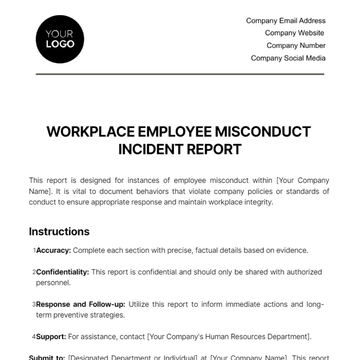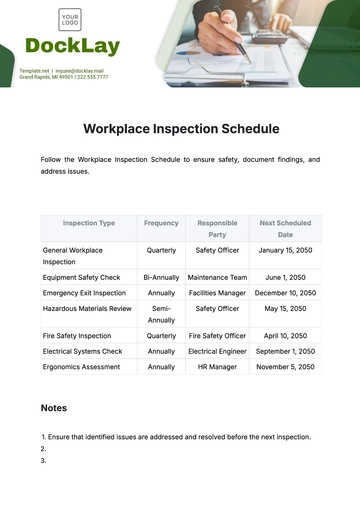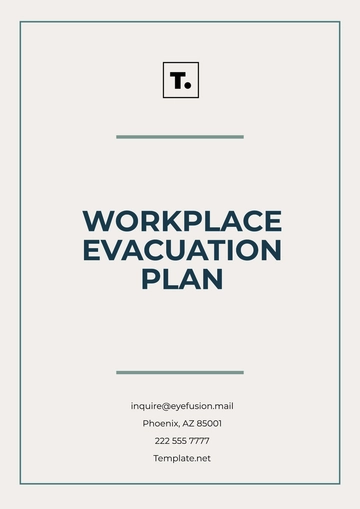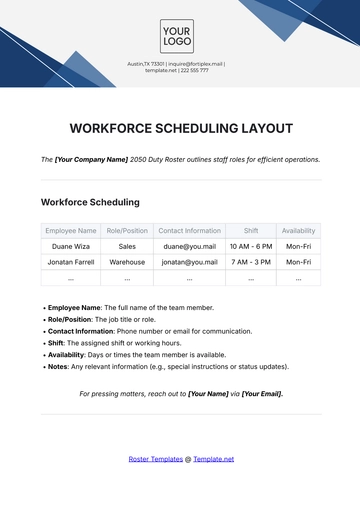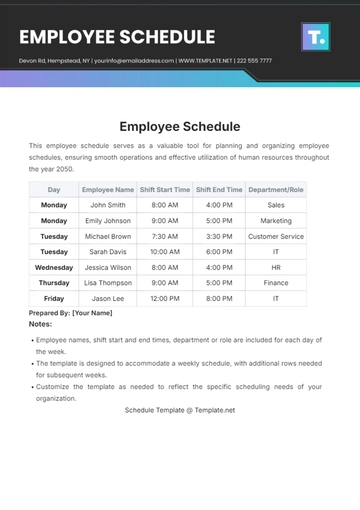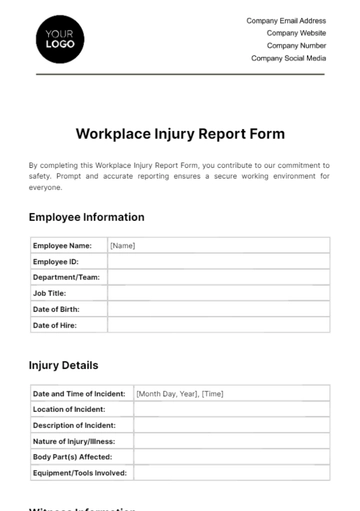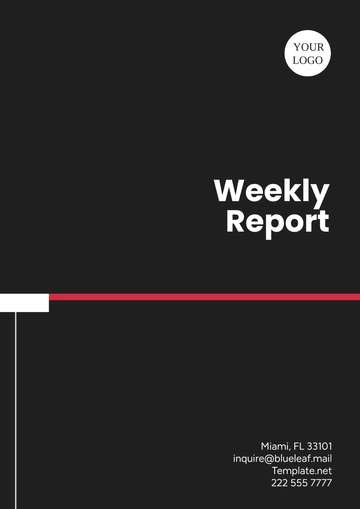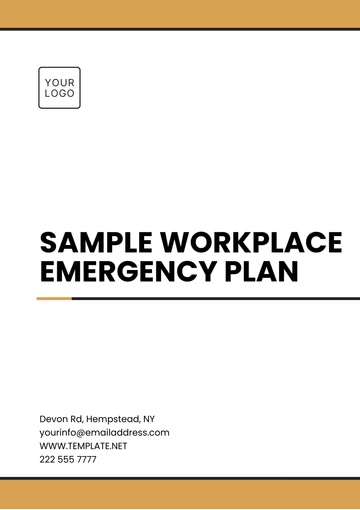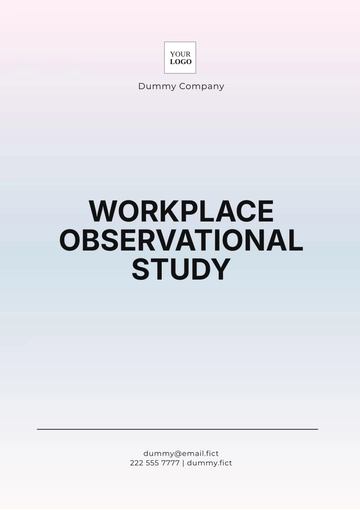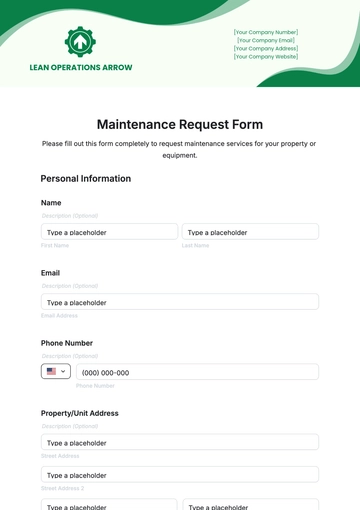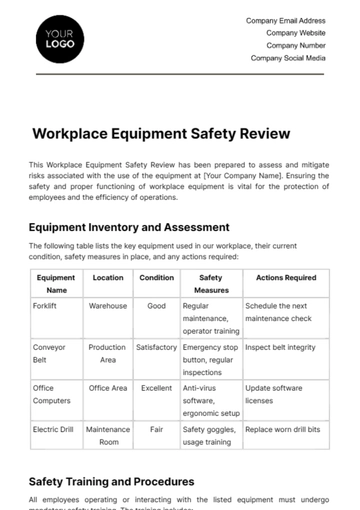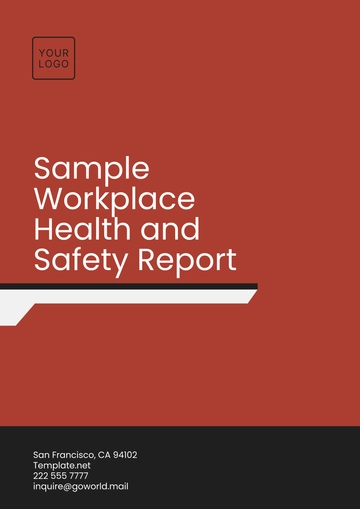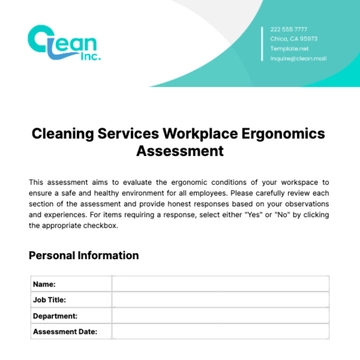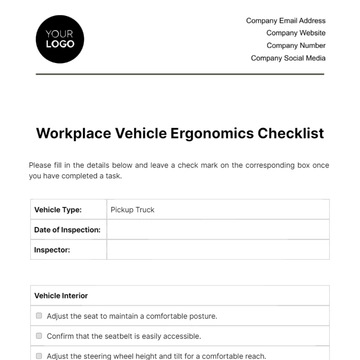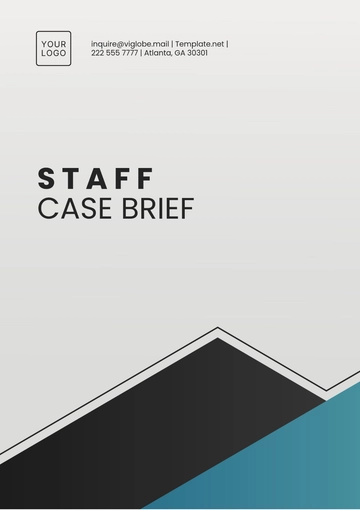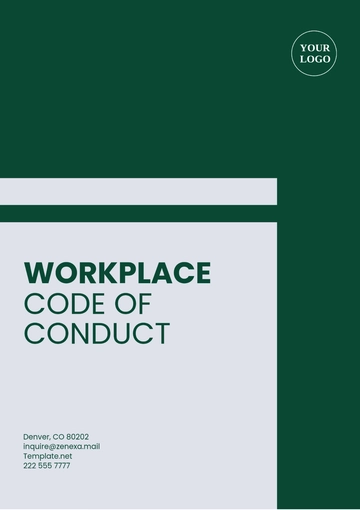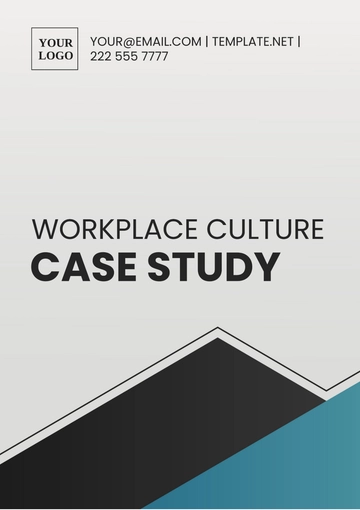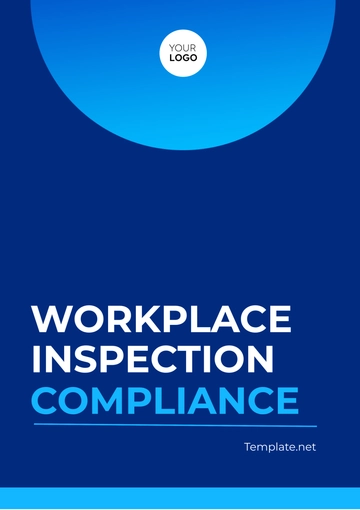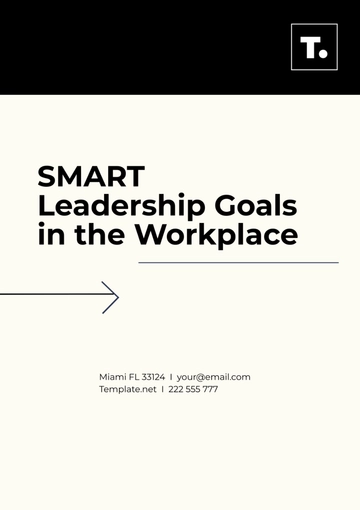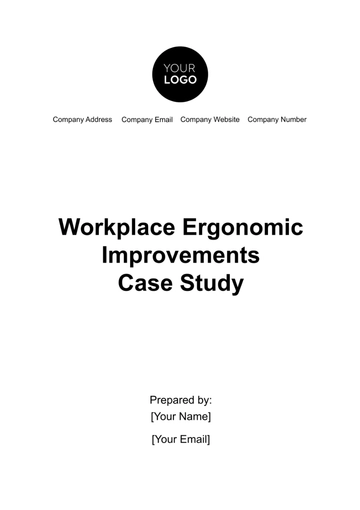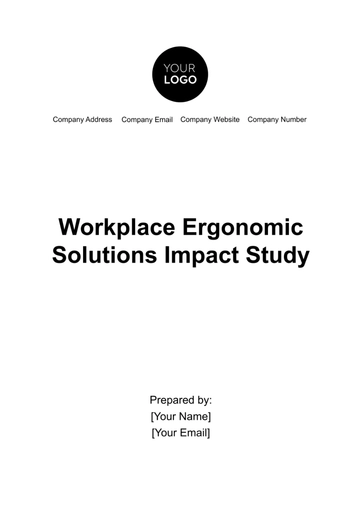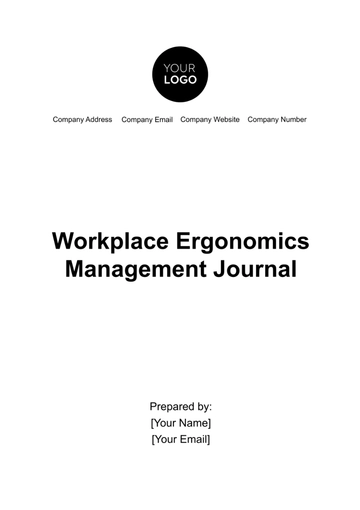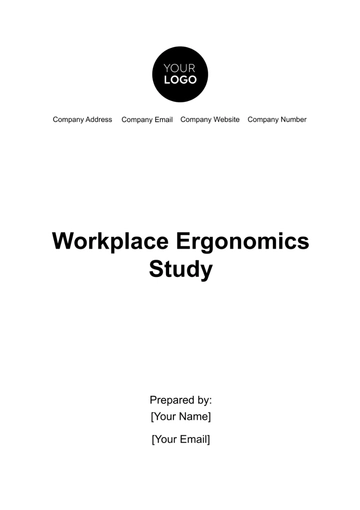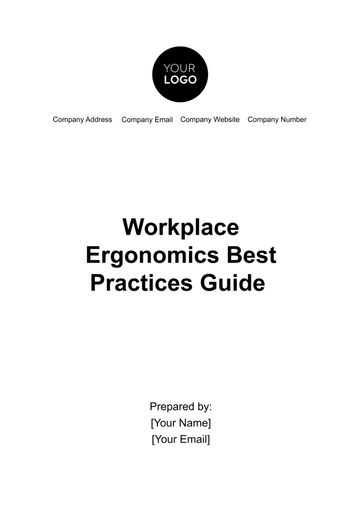Free Workplace Incident Management Journal

I. Incident Details
Date and Time of Incident: | [09-06-2055] at [05:00 PM]. |
Location of Incident: | Occurred at [Specify Exact Location, e.g., "Second floor storage room, [Your Company Name] Building"]. |
Description of Incident: | A chemical spill occurred during routine inventory management, resulting in potential exposure risks and area contamination. |
II. Immediate Actions Taken
Documenting the immediate responses following an incident is essential for evaluating the response effectiveness and identifying potential improvements in emergency protocols. This section uses tables to clearly outline the first response actions and details about emergency services contacted.
First Response Actions:
Action Number | Action Taken | Responsible Party | Time Completed |
1 | Area evacuation | Safety Officer | [5:00 PM] |
2 | Implementation of spill containment measures | On-site Staff | |
3 | Notification of facility safety officer | First Responder | |
4 | Activation of internal emergency response team | Safety Officer |
Emergency Services Contacted
Service Contacted | Time of Contact | Contact Made By | Response Time |
Local Fire Department | [3:00 PM] | Safety Officer | [5:00 PM] |
Hazardous Material Response Team |
III. Impact Assessment
Assessing the impact of an incident is critical to understanding its immediate and potential long-term effects. This section systematically documents the extent of the impact on personnel, property, and operations using structured tables for clarity and precision.
A. Personnel Affected
Employee ID/Name | Role/Position | Type of Involvement/ Injury | Medical Attention Required |
[001] | [Manager] | [Brief Description of Involvement/ Injury] | [Yes/No] |
B. Property/Equipment Damage
Item Damaged | Location/Area Affected | Description of Damage | Estimated Repair/Replacement Cost |
[Item Name] | [Location/Area] | [Description of Damage] | $[Estimated Cost] |
IV. Investigation and Findings
Thoroughly investigating the incident is essential for uncovering root causes and developing preventive measures. This section outlines the investigation process in detail and summarizes key findings using tables for clear and structured presentation.
A. Investigation Steps
Investigation Action | Responsible Party | Completion Date |
Collect eyewitness accounts | Incident Investigator | [09-05-2025] |
Review security footage | Security Team | |
Inspect the incident area for safety compliance | Safety Compliance Officer | |
Interview affected personnel and first responders | HR Representative | |
Analyze equipment or materials involved | Technical Expert |
B. Key Findings
Description of Finding | Impact Assessment |
Primary Cause: Electrical Short-Circuit | The electrical short-circuit led to the fire, pointing to an issue with equipment maintenance and electrical safety protocols. This directly impacted the assembly line's operations, halting production for several hours. |
Delayed Emergency Response | The delay in emergency response exacerbated the situation, causing more extensive equipment damage. It highlighted gaps in emergency preparedness and communication channels within the team. |
Inadequate Safety Training | A lack of thorough safety training was evident, as employees were uncertain about immediate actions. This lack of knowledge risked employee safety and prolonged the incident's resolution. |
Effective Use of Fire Extinguishers | Employees who used fire extinguishers helped contain the fire quickly, demonstrating the effectiveness of available safety equipment when properly used. |
V. Follow-up and Preventive Actions
Effective post-incident follow-up and the implementation of preventive actions are critical components of a robust safety management system. This section outlines the corrective measures taken in response to the incident and details the strategies implemented to prevent future occurrences.
A. Corrective Measures Implemented
Corrective Measure | Implementation Details | Responsible Department |
Upgraded Spill Containment Equipment | Installed advanced spill containment systems in high-risk areas. | Safety & Maintenance |
Reinforced Emergency Evacuation Signage | Updated and added more visible evacuation signs throughout the facility. | Facilities Management |
Conducted Refresher Training | Organized comprehensive training sessions for all staff on hazardous material handling and emergency response. | Human Resources |
Reviewed and Updated Safety Protocols | Revised existing safety protocols to incorporate learnings from the incident. | Safety & Compliance |
Enhanced Maintenance Schedules | Implemented more frequent and rigorous equipment maintenance checks. | Maintenance Department |
B. Preventive Strategies
Preventive Strategy | Strategy Description | Implementation Timeline |
Regular Safety Audits | Conduct thorough safety audits semi-annually to identify and address potential workplace hazards. | Starting [MM-DD-YYYY] |
Incident Reporting App | Launch a mobile app for efficient incident reporting and real-time alerts. | Rollout by [MM-DD-YYYY] |
Continuous Employee Training | Introduce ongoing training programs covering safety procedures, first aid, and emergency response. | Biannual Sessions |
Establish a Safety Committee | Create a dedicated committee for continuous review and improvement of workplace safety. | Committee Formation [MM-DD-YYYY] |
Collaborate with External Safety Experts | Engage with external safety consultants for periodic audits and training. | Collaboration begins [MM-DD-YYYY] |
VI. Training and Awareness Programs
Ongoing training and awareness are key to maintaining a safe work environment. This section outlines the specific programs and initiatives undertaken to educate and empower employees about safety procedures and best practices.
A. Training Programs
Training Program | Description | Frequency | Target Audience |
Emergency Response Training | Training on how to respond effectively to various types of emergencies. | Quarterly | All Employees |
Hazard Communication Training | Instruction on recognizing and handling workplace hazards. | Annually | Staff in High-Risk Areas |
First Aid and CPR Certification | Certification courses for first aid and CPR techniques. | Biennially | Volunteer Emergency Responders |
Health and Safety Induction for New Hires | Introduction to workplace health and safety policies for new employees. | As Needed (New Hires) | New Employees |
Fire Safety and Evacuation Drills | Regular drills to practice fire safety and evacuation procedures. | Biannually | All Employees |
B. Awareness Initiatives
Review Activity | Description | Frequency | Responsible Department |
Annual Safety Protocol Review | Comprehensive review of all safety protocols and guidelines. | Annually | Safety & Compliance |
Review of Incident Management Processes | Evaluating the effectiveness of current incident management procedures. | Biannually | Safety & Compliance |
Updates to Safety and Health Policies | Updating policies to reflect new regulations, standards, and best practices. | As Needed | Legal & Compliance |
Technological Advancements in Safety | Incorporating new technologies and tools for safety management. | As Available | IT & Safety Departments |
Feedback Integration | Implementing changes based on employee feedback and external recommendations. | Continuously | All Departments |
Prepared By:
[Your Name]
[Your Job Title]
[Your Company Name]
© [Year] [Your Company Name]. All Rights Reserved.
- 100% Customizable, free editor
- Access 1 Million+ Templates, photo’s & graphics
- Download or share as a template
- Click and replace photos, graphics, text, backgrounds
- Resize, crop, AI write & more
- Access advanced editor
Experience seamless incident documentation with Template.net's editable Workplace Incident Management Journal Template. Customize entries effortlessly using our AI Editor Tool, ensuring accurate record-keeping for regulatory compliance. Tailor layouts to suit your organizational needs, facilitating comprehensive incident tracking and analysis. Elevate your workplace safety standards with this versatile and user-friendly solution.
